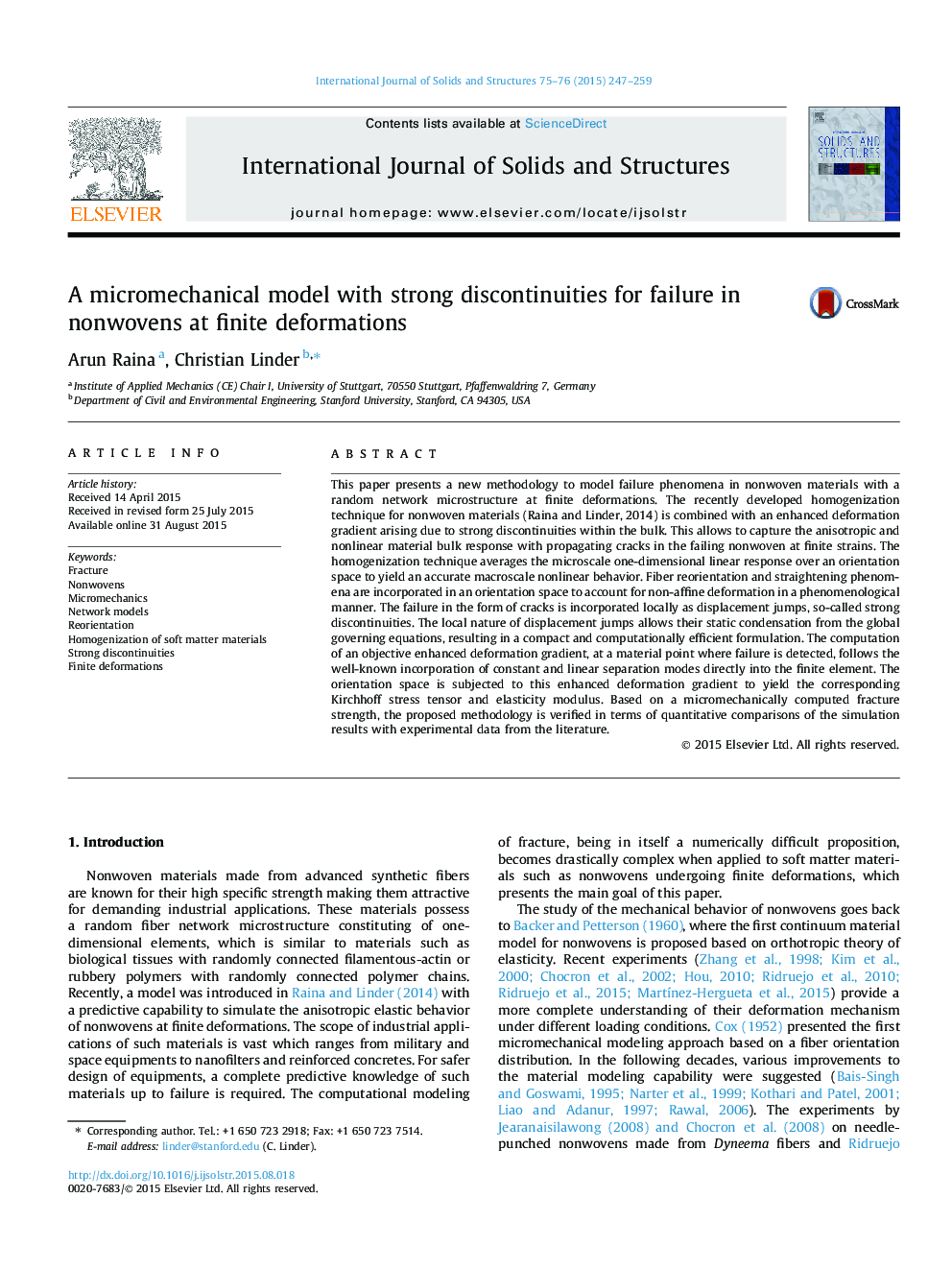| Article ID | Journal | Published Year | Pages | File Type |
|---|---|---|---|---|
| 6748679 | International Journal of Solids and Structures | 2015 | 13 Pages |
Abstract
This paper presents a new methodology to model failure phenomena in nonwoven materials with a random network microstructure at finite deformations. The recently developed homogenization technique for nonwoven materials (Raina and Linder, 2014) is combined with an enhanced deformation gradient arising due to strong discontinuities within the bulk. This allows to capture the anisotropic and nonlinear material bulk response with propagating cracks in the failing nonwoven at finite strains. The homogenization technique averages the microscale one-dimensional linear response over an orientation space to yield an accurate macroscale nonlinear behavior. Fiber reorientation and straightening phenomena are incorporated in an orientation space to account for non-affine deformation in a phenomenological manner. The failure in the form of cracks is incorporated locally as displacement jumps, so-called strong discontinuities. The local nature of displacement jumps allows their static condensation from the global governing equations, resulting in a compact and computationally efficient formulation. The computation of an objective enhanced deformation gradient, at a material point where failure is detected, follows the well-known incorporation of constant and linear separation modes directly into the finite element. The orientation space is subjected to this enhanced deformation gradient to yield the corresponding Kirchhoff stress tensor and elasticity modulus. Based on a micromechanically computed fracture strength, the proposed methodology is verified in terms of quantitative comparisons of the simulation results with experimental data from the literature.
Keywords
Related Topics
Physical Sciences and Engineering
Engineering
Civil and Structural Engineering
Authors
Arun Raina, Christian Linder,
